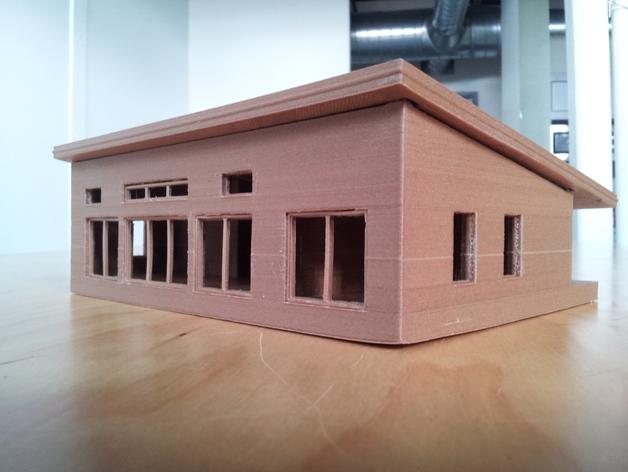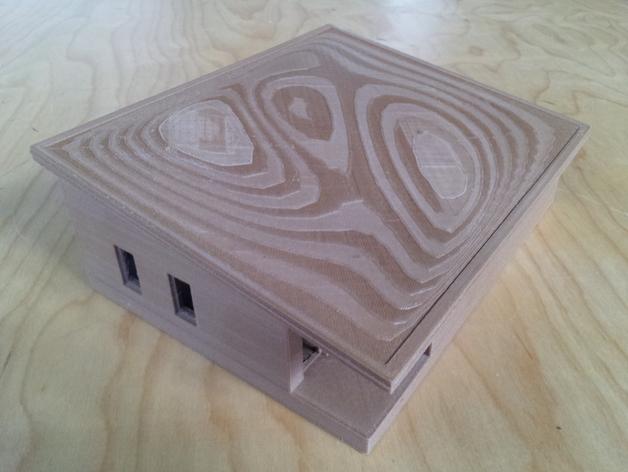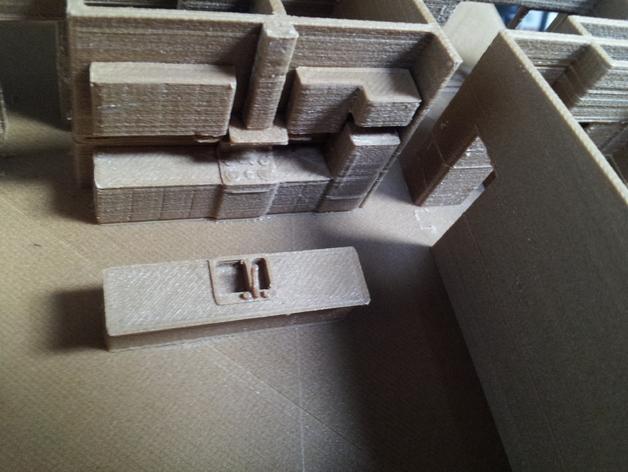 Until very recently, creating architectural scale models was both time consuming and expensive. Most scale models created were of larger, nonresidential projects as residential clients of architectural firms typically don’t have the budgets that would allow for “extras” like scale models. That means that clients building homes relied on blueprints, artists’ renderings in 2D and, more recently, 3D renders and 3D model walk-throughs to help them visualize their dream homes.
Until very recently, creating architectural scale models was both time consuming and expensive. Most scale models created were of larger, nonresidential projects as residential clients of architectural firms typically don’t have the budgets that would allow for “extras” like scale models. That means that clients building homes relied on blueprints, artists’ renderings in 2D and, more recently, 3D renders and 3D model walk-throughs to help them visualize their dream homes.
 Now, however, one Montreal-based 3D modeling and printing expert has a better idea and it won’t stress the budgets of home buyers. Daniel “Dan” Brastaviceanu posted a recent 3D design and printing project on Thingiverse that makes it possible even for new home buyers with small budgets to get a scale model of their dream home before it’s built.
Now, however, one Montreal-based 3D modeling and printing expert has a better idea and it won’t stress the budgets of home buyers. Daniel “Dan” Brastaviceanu posted a recent 3D design and printing project on Thingiverse that makes it possible even for new home buyers with small budgets to get a scale model of their dream home before it’s built.
“Up to now,” Dan told 3DPrint.com, “architectural scale modelling was very time consuming and expensive so mainly for big budget commercial projects. The residential market was small. Clients would have to rely on plans, 3D renders, 3D model walkthrough… to get a sense of their future home. Having a 3D printed model on the table adds the sense of touch, live viewing, even smell and you get to keep it and expose it proudly in your future house.”
In fact, the 3D printed scale model Dan created wasn’t just any old house, it was an actual home built by EcoHome. EcoHome, a member of the Canadian Green Building Council, is a web portal that’s dedicated to assisting Canadian home buyers, builders and owners in learning the principles of sustainable building practices. EcoHome also connects them with providers of resources to build new or upgrade existing homes to make them more eco-friendly–including improving energy efficiency.
Dan’s 3D printed tiny house is, of course, too small to actually live in but the precisely 3D modeled home, whose design is based on one of EcoHome’s real structures, demonstrates how much easier it can be for architects and interior designers to go another step further in helping their clients visualize their eco-friendly dream homes or choose between multiple options based on small scale models. This tool is especially useful where non-cookie-cutter-style houses are concerned.
Dan, who runs BDan Concepts, is an enormous fan of SketchUp and SolidWorks, both of which he uses to create 3D models. He gave some SketchUp classes to 10 or so architects from EcoHome and they used this demo model for the 3D modeling exercises “from PDF plans to construction material planning,” explained Dan. Also pretty amazing were some of the other steps that preceded even the 3D modeling. The class located the model home in Google Earth and were able to get some important data like “the real Sun trajectory and shadow projects.”
He explained why this was important:
“This allows optimal orientation and location and from Google Earth you can also get the actual terrain relief so you can landscape.”
Getting such information allows the designer to create incredibly detailed scale models. With the EcoHome demo model–Dans’s tiny house–even the roof hints at the home’s environmentally-friendly character. Dan explains, “It has a green roof covered in dirt, hence the topographical relief lines.”
Using his ORD MH3000 3D printer, which he refers to as the “Canadian five-headed beast” as it has five high temperature nozzles and heavy duty extruders, Dan printed the scale model house in a material called bambooFill. ColorFabb makes this great material, which consists of 60% sawdust and 40% PLA-PHA. Not only does it make for beautiful prints but–bonus points here–it smells amazing, too!
Ultimately, Dan’s modest but beautiful–and fragrant–eco-friendly model of a life-size eco-friendly demo home was a labor of love, albeit an incredibly affordable one. He estimated his total print time as roughly 35 hours and there was additional labor for post-printing assembly. However, the end result is a budget- and eco-friendly scale model home that would be ideal for displaying on the mantel of the life-size house. Alternatively, architects can use the scale models to present their cutting-edge sustainable home designs to potential clients. What are your thoughts on this scale model? Discuss in the EcoHome forum thread on 3DPB.com.
Subscribe to Our Email Newsletter
Stay up-to-date on all the latest news from the 3D printing industry and receive information and offers from third party vendors.
You May Also Like
3D Printing Financials: Fathom Struggles in Financial Quicksand During Critical Transition
Facing a year of key transitions and financial pressures, Fathom (Nasdaq: FTHM) has filed its annual report for 2023 with the U.S. Securities and Exchange Commission (SEC). The document outlines...
Latest Earnings Overview for Australian 3D Printing Firms Titomic and AML3D
Australian 3D printing manufacturing firms Titomic (ASX: TTT) and AML3D (ASX: AL3) reported their financial results for the period from July to December 2023, marking the first half of their...
3D Printing Webinar and Event Roundup: April 7, 2024
Webinars and events in the 3D printing industry are picking back up this week! Sea-Air-Space is coming to Maryland, and SAE International is sponsoring a 3D Systems webinar about 3D...
3D Printing Financials: Unpacking Farsoon and BLT’s 2023 Performance
In the Chinese 3D printing industry, two companies, Farsoon (SHA: 688433) and Bright Laser Technologies, or BLT (SHA: 688333), have recently unveiled their full-year earnings for 2023. Farsoon reported increases...
































